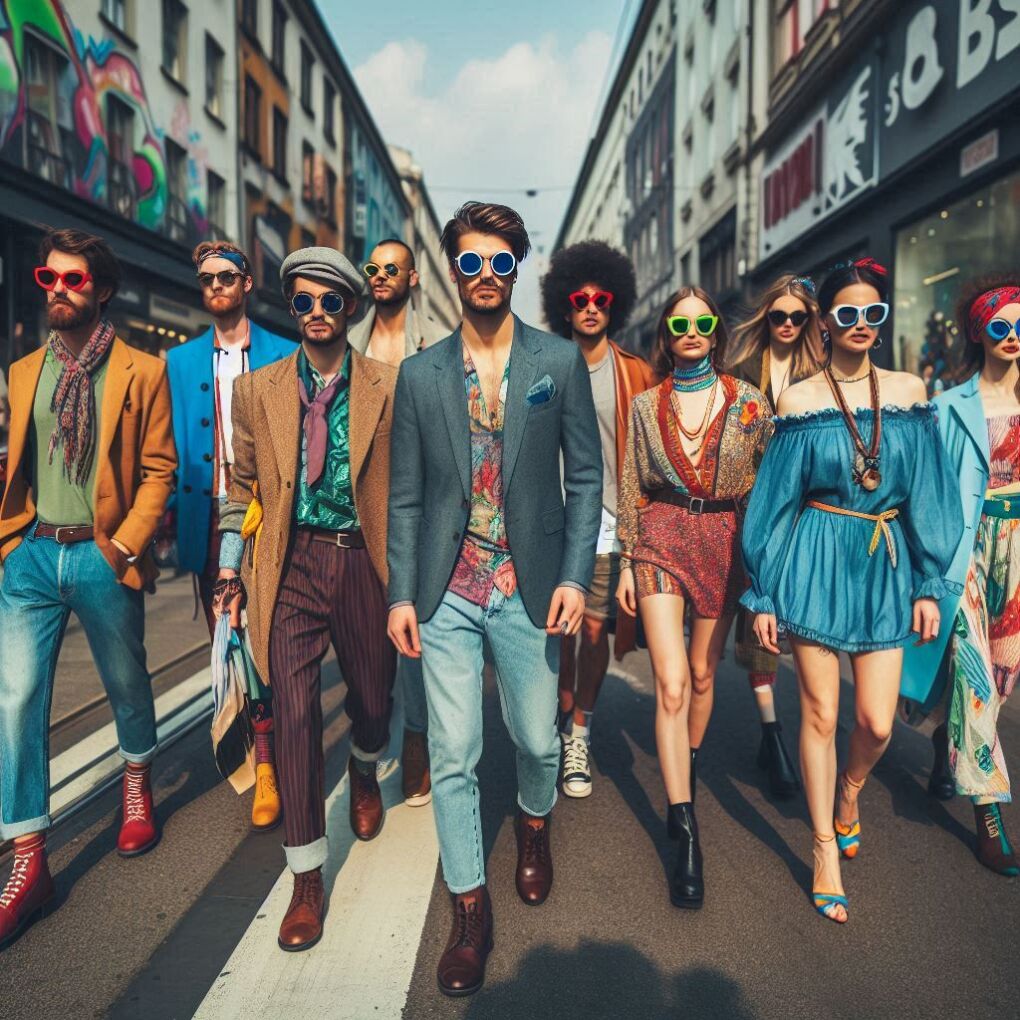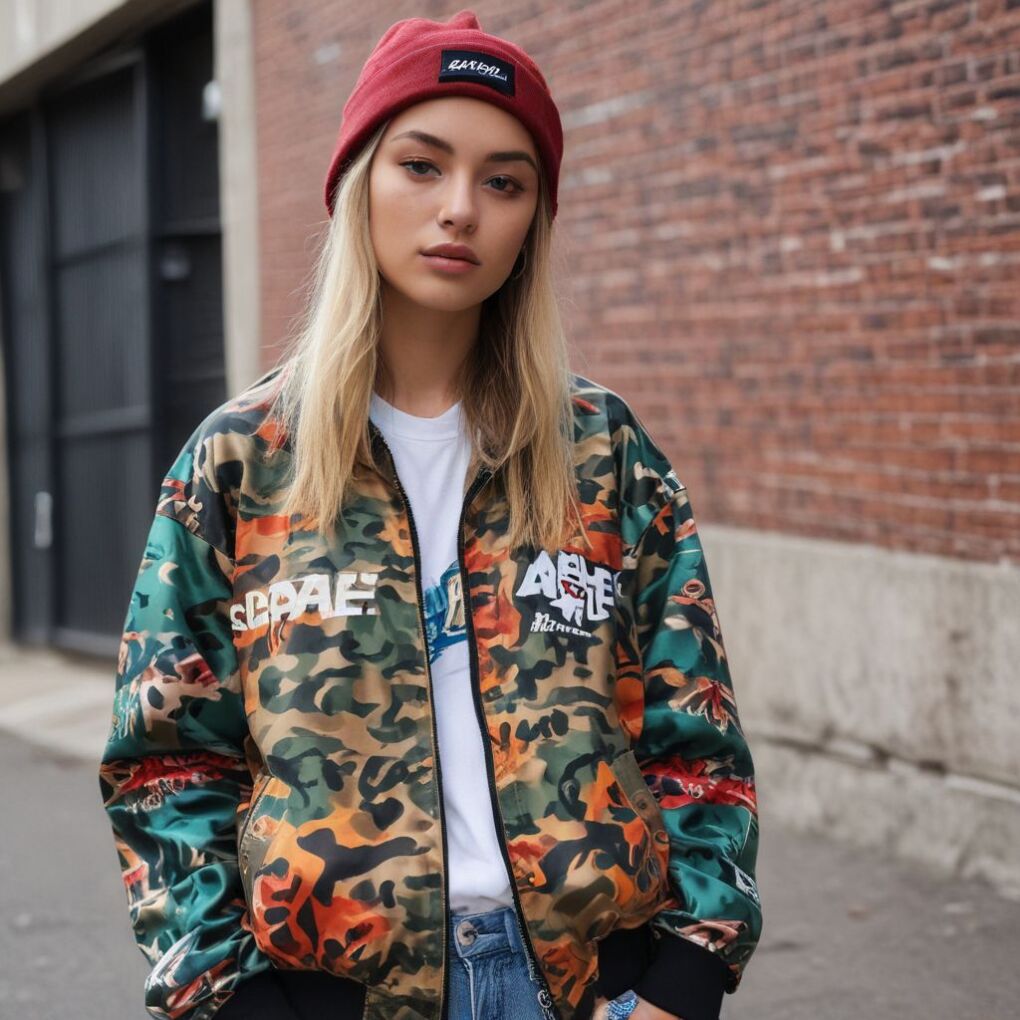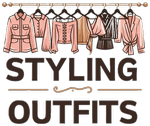Urban fashion, also known as street style or streetwear, is a distinctive fashion trend that emerged from the youth cultures of major cities around the world. It represents a fusion of various subcultures, including hip-hop, skateboarding, and graffiti art. Urban fashion is characterized by a bold, edgy, and comfortable aesthetic that prioritizes self-expression and individuality over traditional fashion norms.

The Origins of Urban Fashion
The roots of urban fashion can be traced back to the 1970s and 1980s, when the hip-hop culture was born in the streets of the Bronx, New York. As this culture gained momentum, young people began to embrace a unique style that reflected their values and way of life. They combined elements from different sources, such as sportswear, military surplus, and workwear, creating a distinctive look that became synonymous with urban fashion.
One of the earliest and most influential urban fashion brands was Stüssy, founded in the 1980s by Shawn Stüssy. The brand’s signature look, featuring oversized t-shirts and baggy shorts, quickly gained popularity among skaters, surfers, and youth subcultures.
Key Elements of Urban Fashion
Urban fashion is characterized by several key elements that set it apart from mainstream fashion trends. These elements include:
- Streetwear Brands: Brands like Supreme, Bape, Stüssy, and Palace have become synonymous with urban fashion, offering a range of clothing and accessories that embody the street style aesthetic.
- Oversized and Baggy Silhouettes: Loose-fitting, oversized clothing is a staple in urban fashion, providing a comfortable and relaxed look.
- Graphic Prints and Bold Patterns: Urban fashion often features graphic prints, logos, and bold patterns that add a touch of personality and individuality to the outfits.
- Sneakers: Sneakers are a crucial component of urban fashion, with brands like Nike, Adidas, and Vans being particularly popular among streetwear enthusiasts.
- Accessories: Urban fashion incorporates a variety of accessories, such as snapbacks, beanies, bucket hats, and backpacks, adding further layers of personal style.

Urban Fashion Influencers and Trendsetters
Urban fashion has been shaped and influenced by a diverse group of individuals, from musicians and athletes to designers and social media personalities. Here are some notable influencers and trendsetters in the urban fashion scene:
- Kanye West: The rapper and fashion designer has been a driving force behind the streetwear movement, collaborating with brands like Adidas and launching his own Yeezy line.
- Virgil Abloh: As the founder of Off-White and the former artistic director of Louis Vuitton’s menswear line, Abloh has been instrumental in bridging the gap between streetwear and high fashion.
- Pharrell Williams: The multi-talented artist has not only made significant contributions to music but has also been a trendsetter in urban fashion through his collaborations with brands like Adidas and Chanel.
- Hailey Bieber: The model and social media influencer has popularized streetwear and athleisure styles, often incorporating pieces from brands like Nike and Adidas into her outfits.
Urban Fashion and Mainstream Acceptance
Originally perceived as a subculture, urban fashion has gradually gained mainstream acceptance and recognition in recent years. High-end fashion houses and luxury brands have embraced streetwear aesthetics, collaborating with urban fashion labels and incorporating streetwear elements into their collections.
This fusion of high fashion and urban style has blurred the lines between different fashion worlds, creating a more inclusive and diverse fashion landscape. As a result, urban fashion has transcended its underground roots and become a global phenomenon, appreciated by people from various backgrounds and social circles.
The Impact of Urban Fashion
Urban fashion has had a profound impact on popular culture and society, extending beyond just clothing and style. Here are some notable ways in which urban fashion has influenced various aspects of life:
- Music and Entertainment: Urban fashion has been closely intertwined with the music industry, particularly hip-hop and rap culture. Musicians have played a significant role in shaping and promoting streetwear trends, while fashion has also influenced music videos and live performances.
- Social and Political Statements: Urban fashion has often been used as a means of self-expression and a platform for social and political statements. Certain clothing items, such as hoodies or graphic tees, have become symbols of resistance and solidarity.
- Youth Culture and Self-Expression: Urban fashion has provided a means for young people to express their individuality and identity. It has fostered a sense of community and belonging among youth subcultures, allowing them to showcase their creativity and unique styles.
- Mainstream Acceptance and Diversity: By breaking down traditional fashion barriers and gaining mainstream acceptance, urban fashion has contributed to greater diversity and inclusivity in the fashion industry, challenging traditional beauty standards and celebrating individuality.

The Future of Urban Fashion
As urban fashion continues to evolve and shape popular culture, it is likely that we will see further integration and fusion with other fashion styles and subcultures. The lines between high fashion and streetwear may become even more blurred, leading to innovative and avant-garde collaborations.
Additionally, the rise of sustainable and ethical fashion practices may impact the urban fashion industry, as consumers become more conscious of the environmental and social impact of their clothing choices.
Ultimately, urban fashion will continue to be a dynamic and ever-changing force, reflecting the creativity, individuality, and cultural influences of the communities that embrace it.
Quotes
“Urban fashion is a way of life, a form of self-expression that transcends trends and reflects the spirit of the streets.” – Anonymous
“Streetwear is more than just clothing; it’s a lifestyle and a culture that celebrates individuality and authenticity.” – Virgil Abloh
“Urban fashion is not just about the clothes; it’s about the attitude, the swagger, and the confidence to express yourself fearlessly.” – Kanye West
Tables
| Urban Fashion Brand | Founded | Notable Collaborations |
|---|---|---|
| Supreme | 1994 | Louis Vuitton, Nike |
| Bape | 1993 | Adidas, Undefeated |
| Stüssy | 1980 | Nike, Converse |
| Off-White | 2012 | Nike, Moncler |
| Influencer | Contribution to Urban Fashion |
|---|---|
| Kanye West | Yeezy line, Adidas collaborations |
| Virgil Abloh | Off-White, Louis Vuitton menswear |
| Pharrell Williams | Adidas collaborations, Billionaire Boys Club |
| Hailey Bieber | Popularizing athleisure and streetwear styles |
Sustainable Urban Fashion
As the fashion industry grapples with its environmental and social impact, sustainable practices are becoming increasingly important, even in the realm of urban fashion. Many streetwear brands and enthusiasts are embracing eco-friendly and ethical initiatives, such as using organic or recycled materials, implementing fair labor practices, and promoting sustainable consumption.
One notable example is the brand Pangaia, which utilizes innovative technologies and sustainable materials like bio-based fabrics and recycled plastics to create streetwear pieces with a minimal environmental footprint.
Additionally, the rise of secondhand and vintage clothing markets has provided an avenue for urban fashion enthusiasts to explore sustainable options while maintaining their unique style.
Urban Fashion and Technology
The intersection of urban fashion and technology has given rise to a new era of innovation and creativity. From augmented reality try-on experiences to digital fashion collections, technology is reshaping the way streetwear is designed, marketed, and consumed.
Brands like RTFKT have pioneered the concept of “digital sneakers,” creating virtual sneaker designs that can be traded and collected as non-fungible tokens (NFTs) on the blockchain. This innovative approach allows fashion enthusiasts to own unique digital assets and participate in a new realm of streetwear culture.
Moreover, the integration of wearable technology and smart fabrics into urban fashion has opened up possibilities for functional and performance-driven streetwear pieces that cater to the active lifestyles of urban youth.
Urban Fashion and Pop Culture
Urban fashion has had a profound influence on popular culture, transcending the boundaries of clothing and style. From music videos and movies to video games and social media platforms, streetwear aesthetics and urban fashion references have become ubiquitous.
Movies like “Straight Outta Compton” and “8 Mile” have showcased the close ties between urban fashion and hip-hop culture, while video games like “NBA 2K” and “Grand Theft Auto” have incorporated streetwear brands and styles into their virtual worlds, further solidifying the cultural significance of urban fashion.
On social media, platforms like Instagram and TikTok have become powerful drivers of urban fashion trends, with influencers and content creators showcasing their unique streetwear styles and inspiring millions of followers worldwide.
Urban Fashion Exhibitions and Museums
As urban fashion continues to gain recognition as a cultural phenomenon, museums and exhibitions have begun to celebrate and preserve its legacy. From the Museum of Modern Art’s “Items: Is Fashion Modern?” exhibition, which featured streetwear pieces, to the Museum of Youth Culture’s dedicated streetwear exhibit, urban fashion is being celebrated as a form of artistic expression and cultural heritage.
These exhibitions not only provide a platform for appreciating the creativity and innovation behind urban fashion but also serve as educational resources, allowing visitors to learn about the history, cultural significance, and social impact of this influential movement.
Conclusion
Urban fashion has evolved from its underground roots to become a global phenomenon, transcending cultural boundaries and influencing various aspects of society. Its bold, edgy, and individualistic aesthetic has captivated audiences worldwide, inspiring a generation of fashion enthusiasts and creatives.
As the world continues to embrace urban fashion, it is essential to recognize and celebrate its cultural significance, while also addressing the industry’s environmental and social responsibilities. By embracing sustainability, innovation, and inclusivity, urban fashion can continue to thrive and inspire generations to come, serving as a powerful force for self-expression and creativity.
